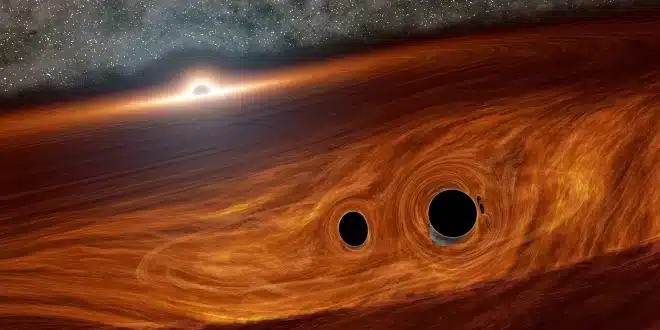Scientists have discovered two supermassive black holes orbiting each other approximately 800 million light-years away from Earth. This marks the closest detection of such black holes, which are predicted to eventually collide, potentially shaking the very fabric of space-time.
In a paper published in *The Astrophysical Journal*, a research team led by Anna Trindade Falcao, a postdoctoral researcher at the Harvard-Smithsonian Center for Astrophysics, discussed the challenges posed by telescope resolution in studying dual black hole systems.
The discovery was made when the team analyzed images taken by the Hubble Space Telescope of a galaxy called MCG-03-34-64. This galaxy is located about 800 million light-years from Earth. The scientists identified three glowing areas, indicating the presence of compressed oxygen gas in large quantities. Upon closer inspection, two of these areas appeared to represent supermassive black holes that were so close together, they initially seemed to merge into one.
NASA likened the black holes to “two Sumo wrestlers squaring off.” Using data from NASA’s Chandra X-ray Observatory, the astronomers confirmed the existence of the powerful black holes within the glowing areas. “We pieced together the evidence and concluded that we were likely observing two closely spaced supermassive black holes,” said Trindade Falcao.
The origin of the third glowing area, also detected by Hubble, remains a mystery. These types of black holes, known as active galactic nuclei, are typically found at the center of galaxies, and it’s possible that the two black holes began orbiting each other after their host galaxies collided.
In around 100 million years, the two black holes are expected to merge, releasing gravitational waves that will ripple through space-time. The astrophysicists described the discovery as “serendipitous.” Trindade Falcao emphasized that the discovery was made possible by the “amazing resolution” of the Hubble Telescope. “We didn’t expect to find something like this. It’s a rare occurrence in the nearby universe and suggests there’s more happening inside this galaxy,” she added.


